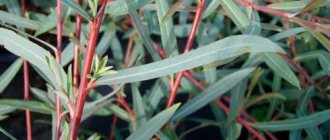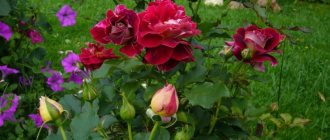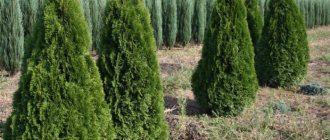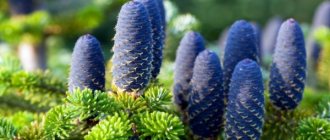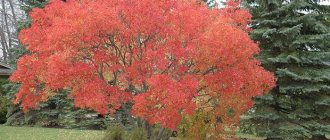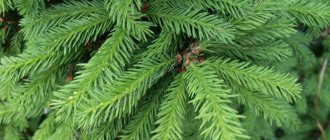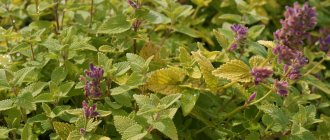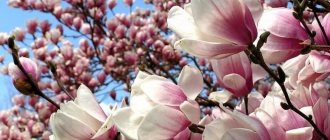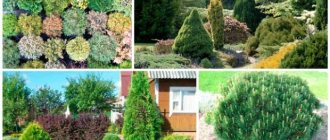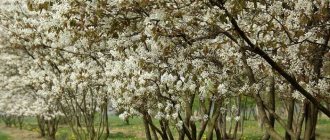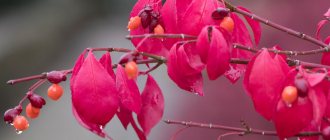Weeping trees have an unusual crown shape. It is formed by drooping, drooping branches. They are elongated, the shoots are thin and bend well. It looks impressive: the foliage forms a green tent or dome.
Most of the weeping forms used in landscaping are bred artificially. Such species have the prefix pendula in the name. Often they are similar to the umbrella varieties (umbraculifera), but in the latter the crown is wider, formed by thick branches, and has slightly different outlines.
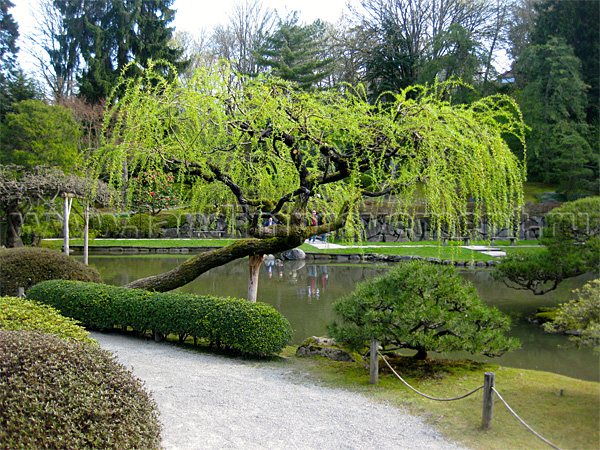
Weeping trees for the garden: general information
Gardeners interested in decorating the site use various original options for presenting familiar plants. One of the ways to surprise guests and liven up the landscape is to form weeping crowns on trees that are not naturally prone to this. Traditional garden plants are willow and birch.
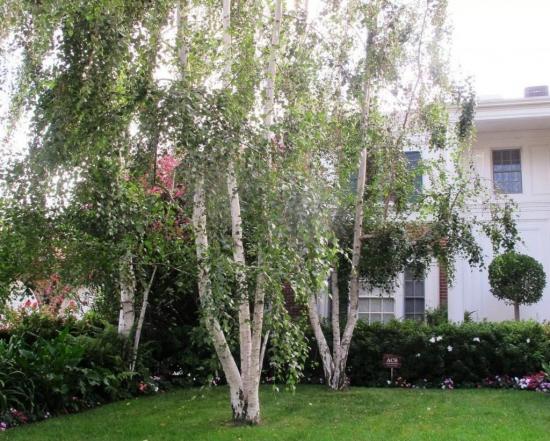

However, if you wish, you can form a "sad" crown of apple, plum, cherry, mountain ash and conifers.
Weeping trees do not differ in height, but they look cumbersome in small areas. If you still want to decorate a small garden, gardeners choose a method of forming a crown according to a narrower type.
Trees with a downward crown intricately set off flower beds and lawns. The peculiarity of the shape allows you to organize shady alleys, where in the heat you can safely hide from the scorching sun. If there is enough free space, the owners can make interesting compositions with the participation of trees of this species.
Such plants look especially good in the vicinity of small reservoirs - ponds, lakes, springs.
Depending on the type of branching, 3 varieties are distinguished:
- reflexa - this type has a sharp bend. The branches hang down practically from the trunk. Such plants have a narrow silhouette and therefore are appropriate for the decoration of a small area;
- pendula - the most typical form, in which the branches of the tree descend to the ground in a graceful flowing arc;
- inversa - with this branching, the shoots first grow perpendicular to the trunk from all sides, and then drop sharply downward, forming a cascade.
For even more information on weeping trees for the garden, see the video:
About apple tree
Ornamental apple varieties bear fruit as well as their cultural relatives. However, their fruits are not always suitable for human consumption. Apple tree care and planting subtleties are slightly different, but they are not difficult. Apple tree
Tree morphology
A young apple tree is not tall, usually up to 3 meters. But its branches are very long and flexible, they are completely covered with leaves, so they lean to the ground under the weight. It is very important to carry out timely pruning so that the shape of the crown is neat. Apple trees, depending on how the crown is formed, can be grown in a composition and as a single decoration. Trees grafted on a trunk deserve special attention.
Description of fruits
The fruits are very small, bright red in color. There are many of them, the branches seem to be completely covered with them from all sides. Fruits hold on tightly to the shoots, even after the onset of frost, which will add decorative effect. The fruit tastes sweet, although not in the conventional sense. They can be eaten fresh and can even be used to make jam. Gardeners often make cider from them.
Yield
It is difficult to say exactly how many fruits can be harvested from one tree. Apples completely cover the branches, there are simply a huge number of them. Therefore, the exact weight of the harvested fruits depends on the width and length of the branches of the crown. But there are really a lot of them.
Frost resistance
The Plakuchaya variety can be cultivated practically throughout the entire territory of the Russian Federation, with the exception of rare very cold regions. It is also distributed in the neighboring countries and in Europe. The dense bark, which covers the shoots, allows them to survive even severe frosts.
How to decorate a garden: ways to form a crown
Numerous varieties of weeping plants are the results of long-term breeding. Specialists had to work for a long time to consolidate such properties at the genetic level. However, this mutation is still very unstable.
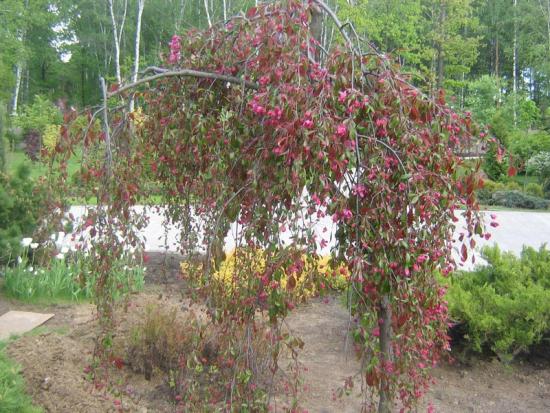

The original form is obtained by such methods:
- man-made formation. Timely and competent formative pruning will allow you to give the necessary shape to almost any tree species. However, the "kids" will not inherit this trait;
- grafting on a stem with a cutting with appropriate properties - in the offspring of such a plant, a weeping crown can form naturally. The height of the trunk must be at least 1.5 meters. Otherwise, over time, the branches of the plant will begin to creep along the ground, and this gives a sloppy look and makes it difficult to sanitize pruning.
How to grow larch on a trunk
Specialists are engaged in the cultivation of larch on a trunk. Gardeners purchase a ready-made seedling. Those who like to experiment can form a stem themselves. The rules for its design are simple.
The stem is created by trimming the crown. The seedling is placed on the site, tied to a support. As they grow, all shoots are cut off. When the desired height is reached, its top is cut off. As a result, lateral shoots begin to grow actively. They need to be pinched to form a dense crown.
Weeping larch is obtained by grafting. Choose a stem, on which shoots of a different variety will be grafted. Grown to a certain height, cut off the top. A vertical cut is made with a sharp knife. The lower part of the grafted cutting is cut at an angle. Insert it into the cut of the stem, tied it with a polyethylene tape. The upper part of the cutting is smeared with garden varnish. A month later, the buds of the cuttings will begin to grow. Shoots are periodically pinched to form a dense crown.
Important! Larch is a cold-resistant, light-loving tree. Can be grown in any region.
Weeping deciduous trees for the garden
Among the deciduous varieties of trees, there are both those in which the natural formation of a weeping crown occurs, and those in which a similar shape can be created by a skilled gardener.
The first type includes the following breeds:
- hanging birch;
- willow of babylon;
- Lespedesia Thunberg.
With age, bird cherry, pear, maple and some other trees can also take this shape.
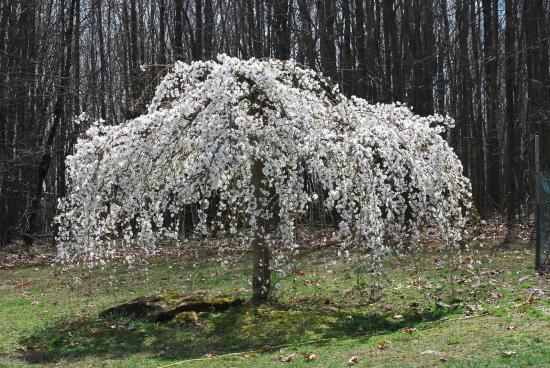

It is believed that the weeping silhouettes of the plantations contribute to a sad lyrical mood caused by affection for the Motherland. This description is the best fit for the drooping birch, which has long become an informal symbol of Russia. It can be up to 25 meters high. In the first years of growth, the tree rushes upward, but after a few years the crown shape becomes sadly lowered.
The willow of Babylon is another tree that symbolizes light sadness. It can reach a height of up to 15 meters. Weeping willows, planted near water bodies, look harmonious. If at the same time the branches lie on the water in places, the landscape of the site will acquire the features of a fabulous landscape. Experienced gardeners do not recommend planting willow in the immediate vicinity of buildings. She has a very strong root system, which over time will begin to destroy the foundation.
Lespedezia Thunberg is a spreading shrub from the legume family that gardeners love for its lush flowering. The flowers of the Thunberg Lespedesia bloom in early autumn and decorate the garden when other trees are already preparing for winter.
Artificial weeping is possible for elm, beech, ash, sophora, bird cherry, apple, pear, peach, mulberry and other fruit trees.
Landing features
Under natural conditions, larch settles on sandy and loamy lands. The plant is usually found on slopes in river valleys, where there are well-drained and humid lands.
Larch roots go deep into the ground, they are not afraid of temperature changes. For planting weeping larch, the following conditions are necessary:
- Requires an open space well lit by sunlight.
- The soil should be light, fertile.
- If the soil is heavy, then you need to make good drainage.
- For weeping larch, it is important that the groundwater is not too close to the surface.
- Swampy soils are not suitable, as this will lead to rotting of the entire root system.
- With acidic soil, it is alkalized with slaked lime.
- It's time to plant - in early spring or autumn, until the buds open or leaves are flying around.
- It is necessary to choose a planting site extremely carefully, because when transplanting a tree, it may die.
- The seedling age for planting should not exceed two years.
Weeping conifers: general information
Not only deciduous varieties can have an interesting shape with falling branches. Among conifers, there are also representatives with natural weeping, as well as those that are easy to give the desired shape with the help of competent pruning.
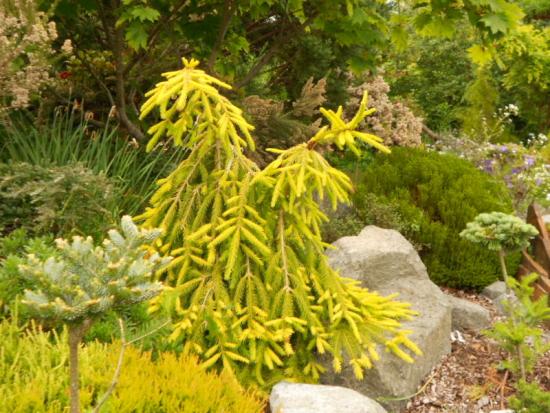

These plants look incredibly sophisticated. Due to their picturesque properties, they are used to decorate parks, squares, sculptural groups. The ability to "wear" green clothes all year round is another advantage of the coniferous decor of various landscapes.
Coniferous plantings are often complemented by stone boulders. This combination looks very picturesque. Landscape designers often experiment with different types of needles, organizing diverse compositions. However, it is important to take into account the fact that drooping branches with yellowish needles against the background of green counterparts will give the tree a sickly look.
Weeping needles are becoming popular among ordinary summer residents. It is important to take into account the soil properties of the garden plot, as well as the possible maximum dimensions of the tree. If the size of the estate allows, the owners can decorate the site on a royal scale.
An evergreen tree with cascading branches gives a fabulous flavor to the image of the estate. Also, do not forget about the medicinal properties of pine needles. Such trees disinfect the air and improve the microclimate near the house.
Popular breeds of weeping needles
Such breeds are considered the most popular among Russian landscape designers.
| Norway spruce | This inversa-shaped tree looks like the original green snowdrift. The plant reaches a height of 5-8 meters, the diameter of the crown in the lower part is 2 meters. Spruce is not too picky to care for. The main condition for its growth is moist, well-drained soil. |
| Serbian spruce | This variety is shaped like a pendula. The tree has elegant dark green needles. Serbian spruce is unpretentious and takes root well on different soils |
| Engelman spruce | The tree is distinguished by its elegant blue-gray needles. The weepingness of the breed is manifested in the form of downward fluffy paws |
| Scots pine | A light-loving tree looks great as a tapeworm. Planted near the house, it will be a wonderful themed decor for the New Year holidays. Lack of breed - poor tolerance to urban conditions |
| Atlas cedar | A mature tree looks extremely monumental, although its height is only 3-4 meters. The color of the needles is silvery blue. Atlas cedar takes root well in the southern regions, where in winter the thermometer rarely drops below -15 degrees. The Black Sea coast is an ideal climatic environment for planting this breed |
| Falling larch | The tree is 1-1.5 meters high with needles soft to the touch. In the fall, the larch outfit acquires a golden-orange tone, and it looks amazing |
| Red cedar | It has thin branches with scaly needles. This breed has not yet become very popular, however, it is gradually beginning to be in demand due to its unpretentious care. Juniper Virginsky tolerates frost, drought and not the most suitable soil. |
Larch varieties on the trunk
In horticulture, low-growing varieties of weeping larch are used. They take up little space, attract attention with their appearance. Pendula form varieties are widespread.
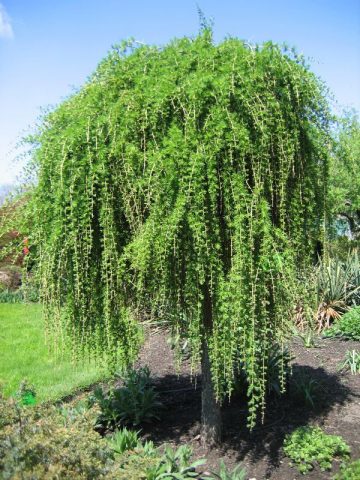

Repens - has branches directed downward. Sometimes they spread over the surface of the earth.
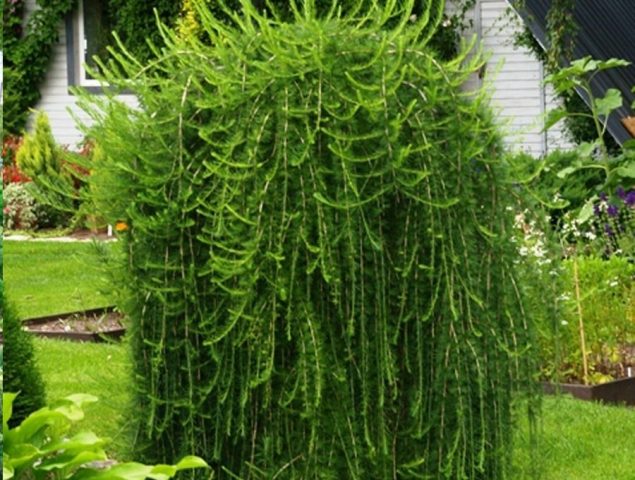

Bullets - forms a mass of shoots that descend to the ground. The color of the needles is light green.
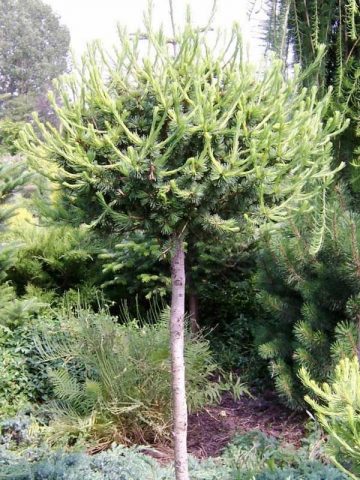

Kornik is a low standard plant forming a crown in the form of a ball of emerald color.
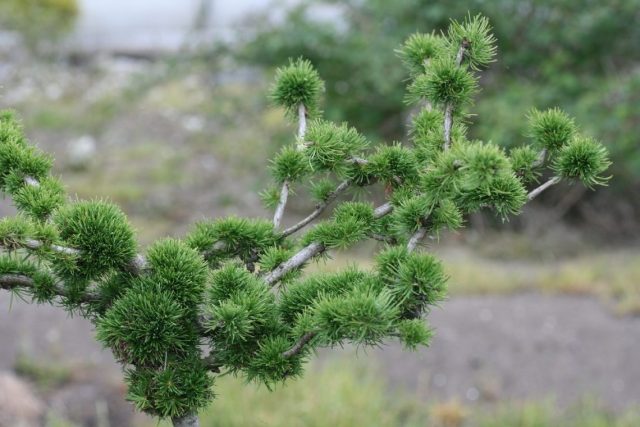

Kreichi is a dwarf variety, up to a meter high. Crohn's wrong, fluffy.
Further, varieties based on Japanese larch.
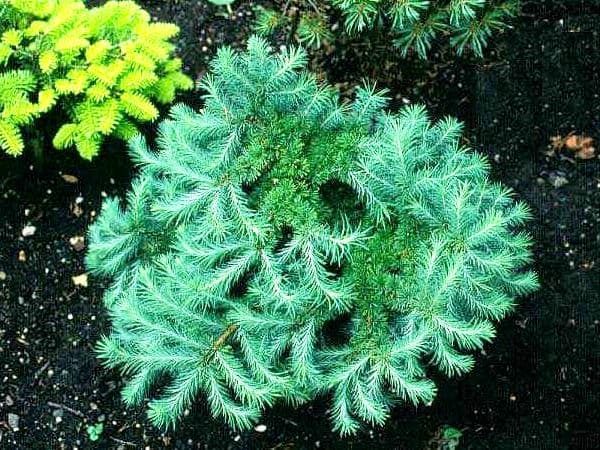

Gray pearl - has a dense crown. Its shape is spherical. It grows slowly, up to 2 m.
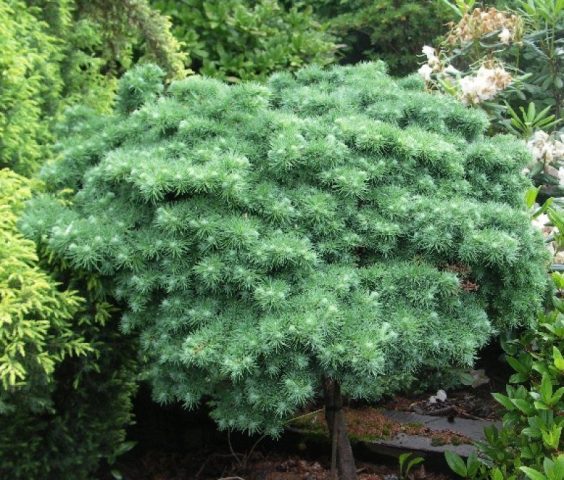

The blue gnome is a stunted variety. For 10 years it reaches 60 cm. Shoots are directed in different directions.
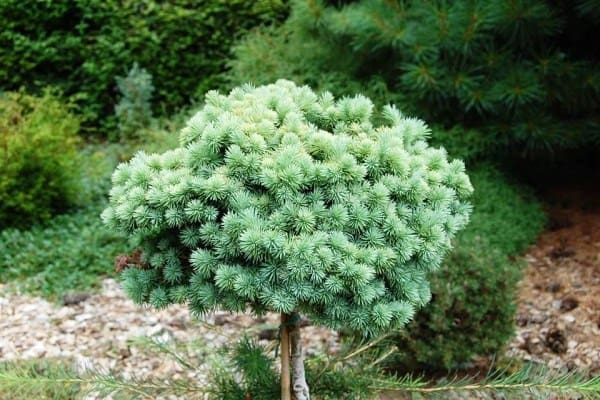

Bambino is the smallest variety. It grows by 2 cm annually. It grows up to 20 cm. It is a ball consisting of bluish-green needles.
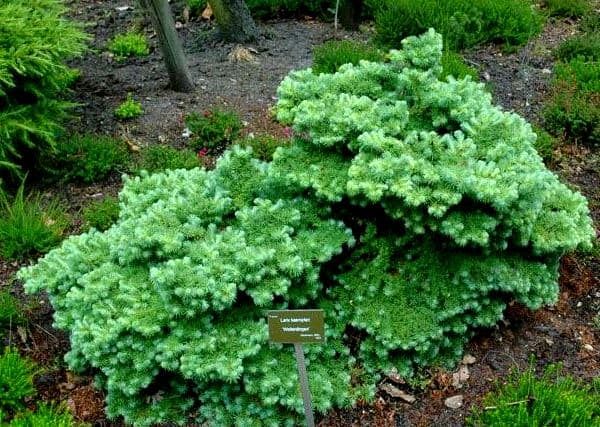

Wolterdingen is a dwarf variety. For 10 years, it gains a height of up to 50 cm. The needles are painted blue-green.
Dwarf trees
It is more difficult for owners of plots with a small area to find a suitable weeping tree. In this situation, sprawling monumental plantings will be inappropriate. Dwarf varieties of weeping rocks can be very useful here.
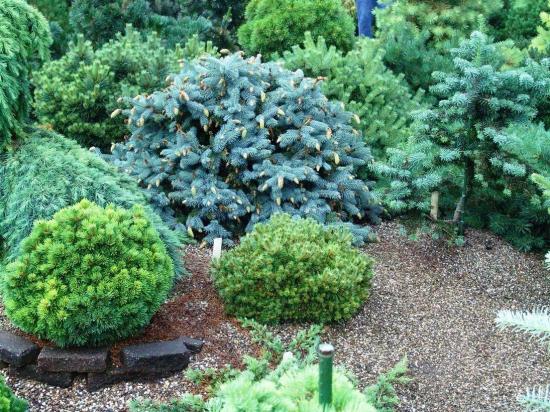

Small in size, they remain a suitable landscape decoration tool.
Conifers are widely available dwarf varieties. On sale are miniature spruces, pines, thuja, juniper trees. The cost of "dwarfs" is an order of magnitude higher, since for their breeding it is necessary to do quite laborious selection work.
Among the deciduous varieties of weeping trees, dwarf specimens can also be found. The cultivation of such a plant is carried out using bonsai technology. The process takes 4-6 years, and this greatly affects the pricing of such decorative elements, and they look much easier than their coniferous counterparts. Dwarf deciduous breeds are more appropriate indoors than outdoors.
On the garden plot, you can grow, if not a dwarf, but a fairly stunted deciduous tree. This is done by inoculation on the stem and constant control over the length of the shoots.
Dwarf tree species need the same conditions as their "normal" relatives.
Reproduction
Red-leaved apple trees can be propagated by cuttings, seedlings and even seeds. Cuttings can be rooted right in the garden using growth stimulants. The process of planting seeds is more laborious and time consuming. First you need to collect seeds from already shriveled fruits, dry them and stratify them. At the beginning of winter, they are sown in boxes with light fertile soil.
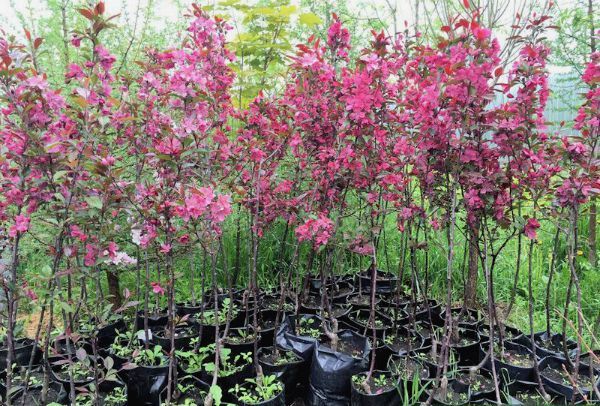

When real leaves appear, the seedlings dive into separate containers and placed in a well-lit room so that they do not stretch out in search of light. Then they are gradually stabbed and accustomed to fresh air. Only then are they transplanted to a permanent place. In the first years, such seedlings should be sheltered from the cold.
Hanging trees: care and pruning
Even if a grafted stem was purchased for the garden in a good nursery, the plant must be properly looked after. Otherwise, it may not show its decorative features vividly enough. Naturally weeping trees do not need much control.
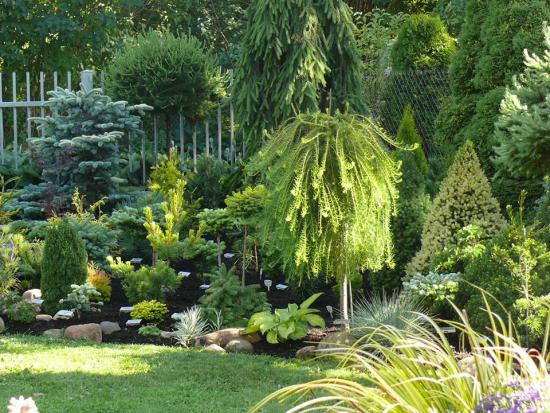

For grafted seedlings, 2 pruning options are used:
- the stem is cleared of unnecessary shoots below the inoculation site. In the first year, the shoots are cut short - they leave 15-20 cm. For the 2-3rd year, the shoots left are shortened by 5-6 buds. Next year, the required length of shoots is determined visually, focusing on the overall picture. In the future, the plant does not need an annual formative pruning. The procedure can be carried out once every several years;
- the second method involves permanent plucking of the apical buds of young shoots during the summer.
Formative pruning in summer-flowering varieties is done in early spring. Trees that bloom in spring are processed at the end of flowering.
In addition to shaping procedures, one should not forget about other generally accepted agricultural procedures. This includes, first of all, the selection of suitable soil, watering, mulching, sanitary pruning, feeding and protection from harmful insects.
A lot of interesting information about pruning and the formation of weeping forms of different breeds - in the video:
Growing in regions
The fairly decent winter hardiness of the ornamental Plakuchee apple tree allows it to be grown even in regions with low temperatures in winter. But the regions will become the most comfortable:
- Central;
- Volga region;
- Moscow region;
- Ukraine;
- Belarus;
- Europe.
However, the Plakuchaya is periodically planted in the Urals and in the southern part of Siberia. It will only be important to insulate the apple tree, especially a young one, and it is good to mulch the trunk circle.
Shaping a tree: how to make a weeping birch from an ordinary birch
If the gardener has no desire or opportunity to purchase high-quality planting material in a specialized nursery, it is worth trying to "make" a weeping tree on your own. So, for example, you can make a high-quality imitation of drooping birch from ordinary birch. To do this, you will need to plant a two-year-old seedling in the fall.
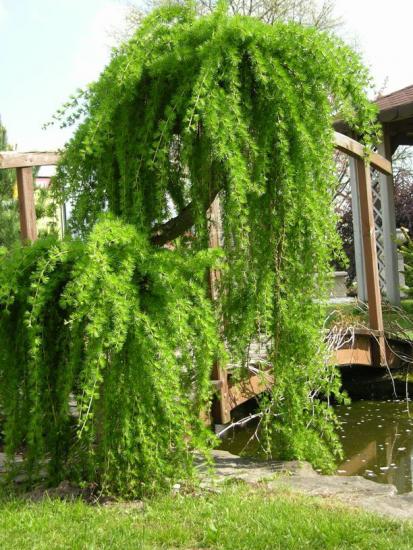

In the spring, the birch is pruned to the first fork. Then pegs are driven in around the tree at a distance of 1 meter, to which the remaining branches will be neatly tied. Unwanted upward shoots are removed as they emerge.
In autumn, the hammered pegs are moved 30 cm closer to the trunk. During the next growing season, procedures are carried out similar to last year.
In the fall of the 3rd year, the branches are untied, and the pegs are removed. By this time, ordinary birch takes a weeping form, and in the future, to maintain it, it will only be necessary to timely remove the shoots growing up.
Gardeners reviews
Not all gardeners risk planting ornamental varieties of apple trees on the site. But those who tried to plant Weeping, left reviews about it.
Nikolay: “Our edge of the site ends with a pond, so we decided to decorate it with a beautiful tree. The Weeping Apple tree in spring looks very elegant, completely covered with bright flowers. In autumn, it is decorated with small red apples, like beads. No worries, only in the spring I spray it from the fungus, when I process my own in the garden.
Marina: “My husband and I bought a dacha where this apple tree grows. At first, they wanted to cut it down at all, because the condition of the tree was very bad. But they regretted, cut off the extra branches in the fall, then in the spring and fertilized well. It was as if the apple tree had been replaced - such beauty awaited us in the spring that we were delighted ”.
Konstantin: “We were at the dacha of friends, the children plucked apples from the tree and tasted it. The wife got scared, thought suddenly not edible and what else would happen. But they turned out to be not just good, but excellent in taste. We decided to plant ourselves the Plakuchaya variety.Now we have a beautiful tree on the plot, the children are eating the fruits, my wife is making jam, and I am cider. ”

